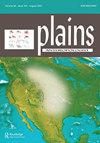New investigations at Bonfire shelter, Texas examine controversial bison jumps and bone beds
Q2 Social Sciences
引用次数: 4
Abstract
Bonfire Shelter (41VV218) is a nationally significant site in the Lower Pecos region of the West Texas borderlands that contains a record of episodic use by hunter-gatherers spanning at least twelve millennia. At least two major bison hunting episodes are evident at Bonfire Shelter, one associated with Paleoindian Plainview and Folsom projectile points (Bone Bed 2), and another associated with Late Archaic Castroville and Montell points (Bone Bed 3). The approximately 12,000-year-old layers comprising Bone Bed 2 may represent the oldest and southernmost bison jump in North America, but this interpretation is the subject of recent debate. In addition, older deposits containing Rancholabrean fauna but lacking stone tools (Bone Bed 1) date to approximately 14,000 years ago and are proposed by previous researchers to be at least partially the result of human activity. This article reviews the issues surrounding Bone Bed 2 and Bone Bed 1 and presents new radiocarbon dates, artifacts, features, along with some initial observations and ongoing plans for renewed field investigations at Bonfire Shelter carried out by the Ancient Southwest Texas Project at Texas State University.在德克萨斯州篝火避难所进行的新调查研究了有争议的野牛跳跃和骨床
篝火避难所(41VV218)是位于得克萨斯州西部边境的下佩科斯地区的一个全国性重要遗址,其中记录了狩猎采集者在至少一万两千年的时间里偶尔使用的情况。Bonfire Shelter至少有两次主要的野牛狩猎事件,一次与古印度平原和福尔索姆投射点有关(Bone Bed 2),另一次与晚古卡斯特罗维尔和蒙特尔点有关(Bone Bed 3)。包括Bone Bed 2的大约12000年前的地层可能代表了北美最古老、最南端的野牛跳跃,但这种解释是最近争论的主题。此外,包含Rancholabrean动物群但缺乏石器的较老矿床(Bone Bed 1)可以追溯到大约14000年前,先前的研究人员认为至少部分是人类活动的结果。本文回顾了骨床2和骨床1的相关问题,并介绍了新的放射性碳年代、文物、特征,以及德克萨斯州立大学古代西南德克萨斯项目在篝火避难所进行的一些初步观察和正在进行的重新实地调查计划。
本文章由计算机程序翻译,如有差异,请以英文原文为准。
求助全文
约1分钟内获得全文
求助全文

 求助内容:
求助内容: 应助结果提醒方式:
应助结果提醒方式:


